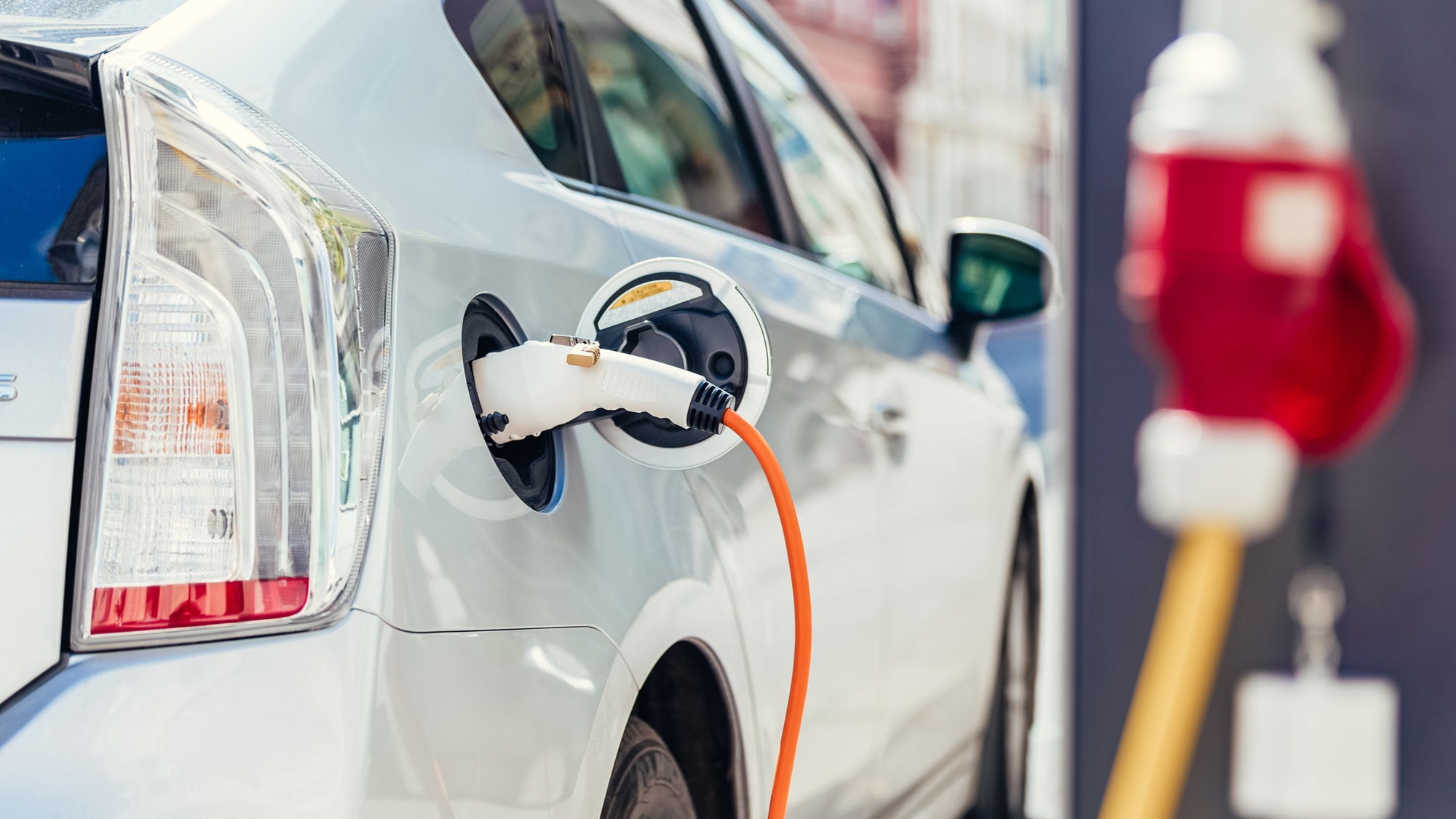

A cross country US road trip in an electric vehicle might start to sound more appealing thanks to a fresh $623 million round of investment in EV charging networks from the Biden Administration. The new funds will inch the US towards Biden’s ultimate goal of 500,000 EV chargers nationwide by 2030 and help put to rest some riders’ fears of running out of juice mid journey. But infrastructure alone may not be enough to counteract slumping EV sales in recent months. Persistently high prices and drops in gas prices have left most Americans sitting on the fence when it comes to considering a new EV.
The Biden Administration’s Department of Transportation announced the new funding on Thursday, which will come by way of grants sent to support 47 EV charging and alternative-fueling projects spread across 22 states and Puerto Rico. Those projects should lead to the construction of an estimated 7,500 EV charging ports, with many located in lower income and rural areas where charging infrastructure is still spotty. The latest round of EV funding stems from the 2021 Bipartisan Infrastructure law, which carved out $7.5 billion in total funds for charging infrastructure.
“The public placed great trust in DOT, and we are honoring that trust by making improvements to transportation that get people and goods to where they need to be more safely, affordably, and sustainably while creating good-paying jobs,” DOT Secretary Pete Buttigieg said in a statement.
Continuous investments in charging infrastructure are crucial to addressing range anxiety, one of the top barriers keeping drivers from switching over to electric vehicles. To that end, the administration claims publicly available EV charging ports have increased nearly 70% nationwide since Biden took office in 2021. That adds up to 161,562 total ports as of late last year, which works out to around a third of the administration’s goal of half a million chargers by the end of the decade.
Additional government-funded charging ports can have less obvious psychological effects as well. Less than half (47%) of US adults surveyed by Pew Research last year said they were confident the US government could build out the infrastructure needed to properly power electric vehicles nationwide. But those who did think the government was up to the task were also far more likely to say they would consider an electric vehicle next time they buy a car. Proper infrastructure support from the government, in other words, can make EVs seem more attractive to potential buyers.
High up-front costs and cheaper gas present roadblocks
But easy access to charging ports isn’t the only issue keeping EVs from flooding US highways. Despite years of technological innovation and government subsidies, most electric vehicles are simply too expensive for average buyers. Tesla, by far the largest seller of EVs in the US, made a dent in the average EV cost when it slashed its own prices, but consumers still lack much variety in terms of new electric vehicles under $50,000. A recent survey of global respondents by S&P Mobility listed affordability as the top concern slowing EV demand. Nearly half (48%) of those respondents said EV prices were simply too high.
“Pricing is still very much the biggest barrier to electric vehicles,” S&P Mobility Senior Technical Research Analyst Yanina Mills said in the report.
Slowing EV sales could, ironically, partly be explained by cheaper gas prices. EVs experienced a blockbuster year of adoption in 2022 when gas prices were soaring to upwards of $5 per gallon in certain parts of the US. Those inflated gas prices made switching over to an electric vehicle, even one slightly more expensive than an internal combustion alternative, more attractive. But prices fell back down to around $3 per gallon nationally last year, which some experts argue may have turned off some would-be EV buyers who were previously on the fence.
Making matters worse, certain carmakers like Ford and Audi have also either scaled back production targets or delayed rollout of certain EV products citing the recent market trends. AutoPacific President and Chief Analyst Ed Kim recently told ABC News these factors and consumers’ recent attitudes towards EV’s means electric vehicles sales could top out around 1.5 million units by the end of 2024, a more reserved estimate than earlier, more optimistic predictions.
“We’re not seeing the level of frenzied activity we saw earlier,” Kim told ABC. “There’s a slight tapering of demand and partially a market correction.”
None of that necessarily means EVs are down for the count. Asking prices for less luxury focused EVs models are likely to continue dropping as carmakers ramp up manufacturing. Ford, the leading automaker by volume in the US, says it plans to produce 600,000 EV units annually by sometime next year. Other automakers have similar EV production ambitions. Cheaper upfront costs could similarly make slight variations in gas affordability less of a make or break consideration for drivers thinking about making a switch to EVs.
“The rate of adoption has tailed off a little bit but it’s still growing,” Kim added. “This is not a catastrophe for EVs.”
EV charging availability alone won’t suddenly shift the vast majority of US drivers away from internal combustion engines, but a lack of that available will undoubtedly make that shift much harder. Instead, rapid EV adoption may likely rely on a careful combination of an expanded charging network, lowered upfront cost, and continuing shifts in overall demand.
